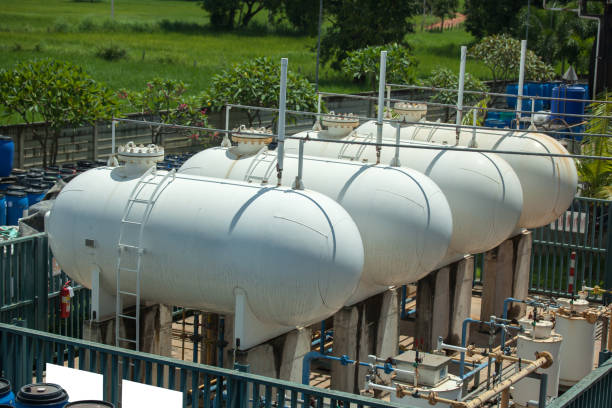India’s Renewable Gas: Progress and Prospects

Q1. Could you start by giving us a brief overview of your professional journey and how your experience in process engineering, RNG/BioCNG, and waste-to-energy has shaped your perspective on clean fuel commercialization?
The first professional connection with biogas dates back to early 2006 when we became interested in the concept of a biogas plant powered by agricultural pump sets. Subsequently, we explored biogas as a vehicle fuel. During my post-university career, I was part of India’s biofuel journey as a technical resource at India’s largest biofuel company and subsequently at several other organisations before fully focusing on renewable gases such as compressed biogas (waste-to-energy) and hydrogen as future outlooks.
This sector has historically been regarded as a niche area and has developed differently from other major energy sectors. It has been largely compliance-driven, which has significantly limited the development of comprehensive expertise. However, the country has recently recognized the sector’s true potential and the vital role it can play in enhancing energy security and creating a better environment for future generations.
Throughout my professional and personal journey, I have remained committed to driving positive change. This sector offers an opportunity to contribute across the entire value chain and to foster collective growth, ultimately securing a better future for the next generation and advancing the farm-to-wheel revolution. These factors have played a significant role in my decision to realign my focus on this industry in recent years, and I believe it will continue to be pivotal moving forward.
Q2. What advancements in upgrading raw biogas to pipeline-grade RNG are you seeing as most promising (e.g., biological upgrading, membrane separation, hybrid purification methods), and what trade-offs are involved in choosing among them?
There will be a significant shift in the understanding of customers regarding available gas purification systems and their alignment with current and future quality standards. The quality requirements will become more clearly defined and implemented in the near future, which will demand systems and technologies proven for their consistency and performance over the years at a lower total cost of ownership. Membrane and water scrubbing-based systems will emerge as the preferred options, with numerous hybrid combinations being developed for time-tested performance.
Operating expenses, durability and ease of maintenance and operation will be critical factors that will drive technology preferences in the coming years.
Q3. Feedstock consistency remains a bottleneck in RNG projects. In your view, what strategies or innovations are helping ensure reliable feedstock supply and quality year-round?
Flexible multi feedstock and a better understanding of its specification and impact on performance will be prioritised. While feedstock is a critical bottleneck, the developer lacks insights into the feedstock supply chain beyond the feedstock itself. This is a location and project-specific area, such as paddy straw in Punjab and Uttar Pradesh, which are not comparable.
AI-driven data-driven asset-light business models offering long-term quality and quantity visibility will emerge in the near future, providing a mutually beneficial proposition for all stakeholders in the ecosystem. Policy frameworks and regulations will be refined to support the evolving value chain.
Q4. Zero Liquid Discharge (ZLD) and wastewater reuse are increasingly demanded by regulators and communities. Which technologies or designs are emerging that balance cost, energy input, and water recovery most effectively in your sector?
Improving the utilisation of liquid FOM and promoting this at a grassroots level will be crucial to success. Achieving ZLD will be a significant setback to the existing fragile business model of CBG facilities.
Enriching this fraction will demonstrate a rapid impact on agricultural produce and promote local ecosystem development, serving a broader objective beyond CBG.
A conventional ZLD system will be overly burdensome on the overall business. Therefore, innovation to drive value-for-money technologies will be mutually beneficial to all stakeholders.
Q5. How are commercial and policy structures (subsidies, blending mandates, infrastructure/grids) influencing investor confidence and project viability in the renewable gas / waste-to-energy domain?
This phase is crucial for the industry’s development and should be implemented in a manner similar to the US and European support systems. The industry should demonstrate its viability before receiving further support. As it gains strength and stabilises, the assistance can be phased out.
Production-linked benefits would provide a more effective measure of the industry’s progress than a lump sum of support. However, both are essential for sustaining business.
Long-term visibility of these support assurances will be crucial for securing finance.
Q6. When scaling up RNG or BioCNG projects, what operational or process engineering challenges (such as purification, compression, logistics, offtake) tend to emerge, and how are they being addressed?
Technology challenges are less impactful compared to the need to explore the feedstock supply chain and product offtake ecosystem at an affordable cost. These areas require unbiased consideration to support the business.
Q7. If you were advising investors evaluating projects in renewable natural gas, biofuels, or waste-to-energy, what key indicators and proof points should they look for to assess long-term competitiveness, sustainability, and return on investment?
Following are largely the topics to be looks for in this case,
- An executable and enforceable feedstock supply agreement with its respective durations.
- Technology footprints and operating benchmarks in terms of availability and efficiency.
- Product offtake on the ground and its future trajectory will be key to defining plant capacity. This could include a product offtake agreement such as a take or pay arrangement but is not limited to this. A phased project approach could also be beneficial.
- Skilled key managerial and operation teams are essential to the business.
- Local infrastructure and government support with its extent and ease of access to the location.
- The location is also an important aspect as it influences many business aspects.
Comments
No comments yet. Be the first to comment!
